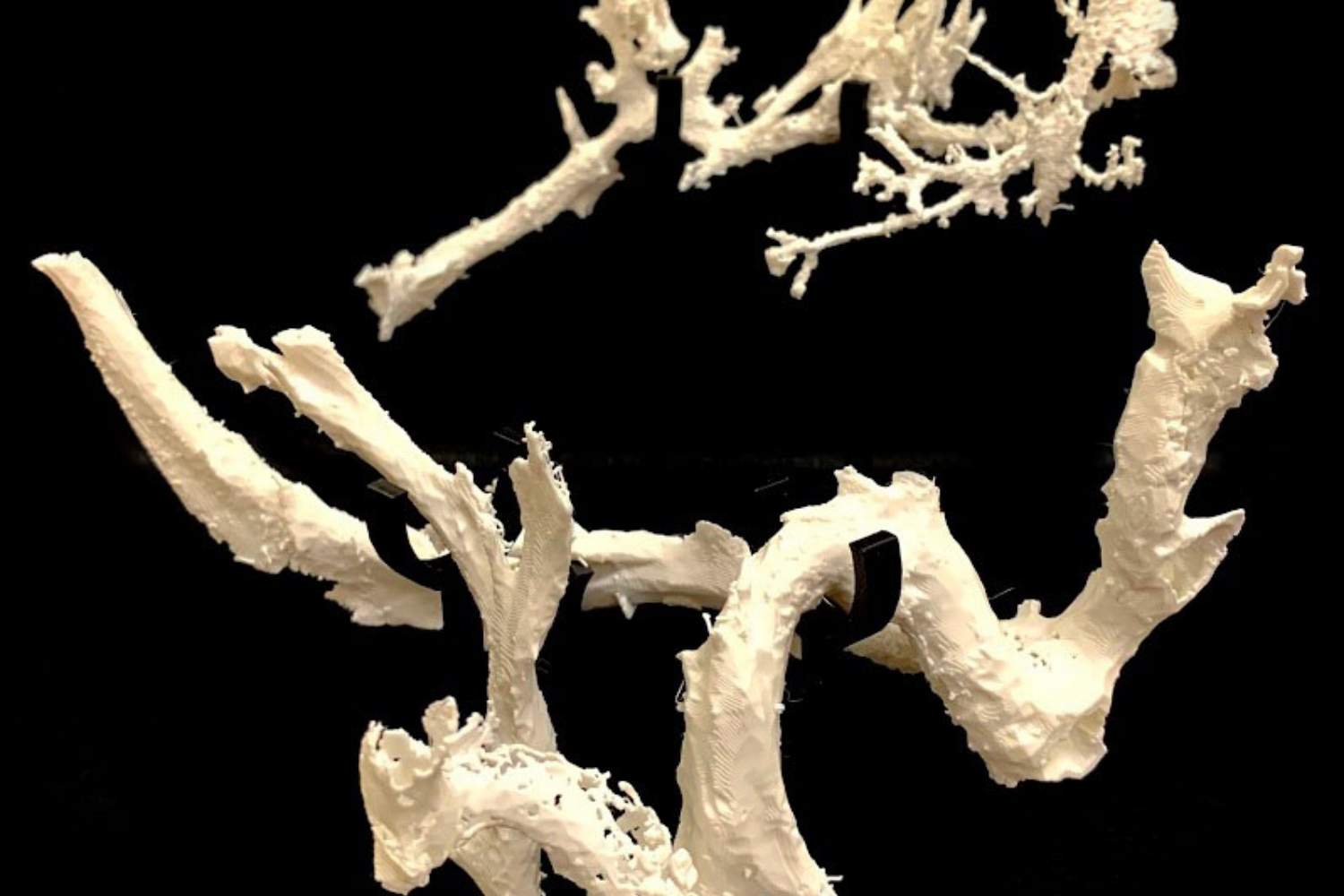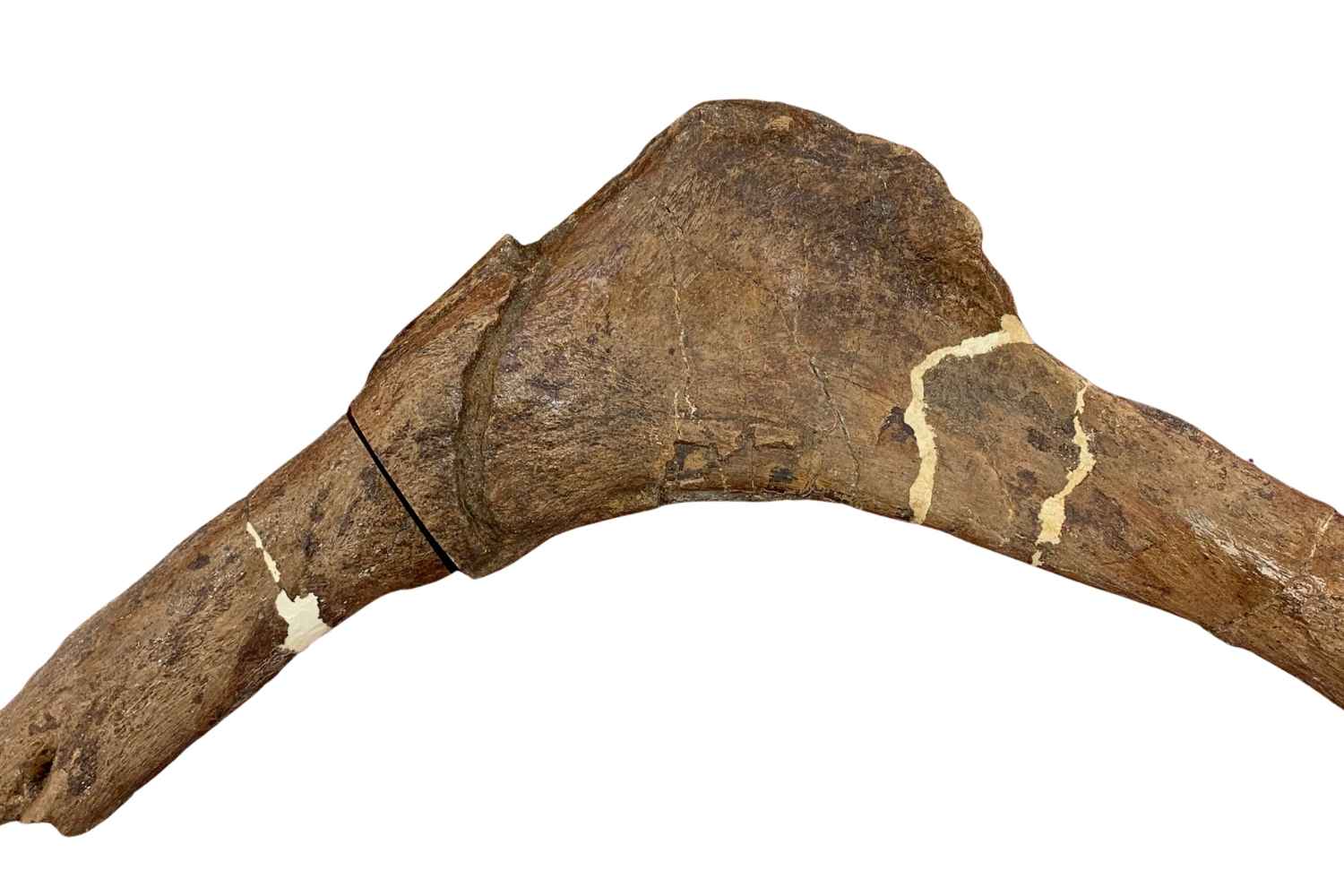Scotty’s rib: University of Regina PhD student examines preserved blood vessels in famous fossil
Using CLS beamlines, University of Regina team gain new insights into how dinosaur bones may have healed after injuries.
By University of Regina, Royal Saskatchewan Museum, Canadian Light SourceA University of Regina research team made some dino-mite discoveries about how dinosaurs may have healed from injuries when they examined the preserved blood vessel structures inside a rib bone from Scotty, the famous Tyrannosaurus rex unearthed in Saskatchewan in the 1990s. Their findings were recently published in Scientific Reports, an open-access journal that publishes original research from across the natural sciences, psychology, medicine, and engineering.
Jerit L. Mitchell, a PhD student in the Department of Physics at the University of Regina, is the study’s lead author, who joined the research project in 2019 when Scotty’s rib was scanned at the Canadian Light Source (CLS) for the first time. Mitchell was finishing his undergraduate honours thesis research when he discovered the vessel structures.

“I remember showing my supervisors, Dr. Barbi and Dr. McKellar, a strange structure inside a scan of the rib that I originally didn’t give much thought to. They were quick to point out that what I discovered could possibly be preserved blood vessels, which has since led to a much more expansive research project,” says Mitchell.
The powerful synchrotron X-rays produced by the CLS at the University of Saskatchewan enabled the researchers to create a detailed 3D model of both the T. rex bone and the soft tissue structures that reside inside without damaging the 66-million-year-old fossil. Then, using chemical analysis, the researchers determined what elements and molecules make up the vessel structures, allowing them to hypothesize how the structures were preserved over millions of years.
The X-rays of Scotty’s rib showed a healed fracture, possibly due to a fight with another dinosaur. This discovery could provide important, evolutionary information to researchers, such as the healing potential of a T. rex.

"It was a real treat to be able to contribute to this research," says Mohsen Shakouri, a staff scientist at the CLS. "We are pleased that our ultrabright synchrotron light helped the team gain new insights into the physiology of everyone’s favorite T. rex.”
Dr. Mauricio Barbi, physics professor at the U of R and Mitchell’s graduate supervisor, says this discovery could help focus the search for soft tissue in fossils.
“Preserved blood vessel structures, like we have found in Scotty’s rib bone, appear linked to areas where the bone was healing. This is because during the healing process, those areas had increased blood flow to them,” says Barbi. “This work also provides a new way to compare how injuries healed in extinct animals, like dinosaurs, with living species, such as birds and reptiles, which helps us better understand the biology of the past, and also how life on Earth has evolved over millions of years.”
This multidisciplinary study involved researchers from the University of Regina’s departments of physics, biology, and earth sciences, along with the Royal Saskatchewan Museum (RSM).
“Fossils like those from Scotty are more than museum exhibits, as they continue to advance science in ways we never imagined when they were first unearthed,” says Dr. Ryan McKellar, RSM curator of palaeontology and adjunct professor at the U of R. “Part of our role at the Royal Saskatchewan Museum is to ensure these specimens remain available for research, so it’s exciting to see new technology and collaborations between the RSM, the University of Regina, and the Canadian Light Source revealing discoveries, while keeping the fossils intact for future generations.”
Mitchell, J.L., Barbi, M., McKellar, R.C. et al. In situ analysis of vascular structures in fractured Tyrannosaurus rex rib. Sci Rep 15, 20327 (2025). https://doi.org/10.1038/s41598-025-06981-z
--
Access images and B-roll related to this research
Media Relations:
Greg Basky
Communications Coordinator
Canadian Light Source
Phone: 306-370-9446
Email: greg.basky@lightsource.ca
Mindy Ellis
University Marketing & Communications
University of Regina
Phone: 306-585-5422
Email: Mindy.Ellis@uregina.ca
